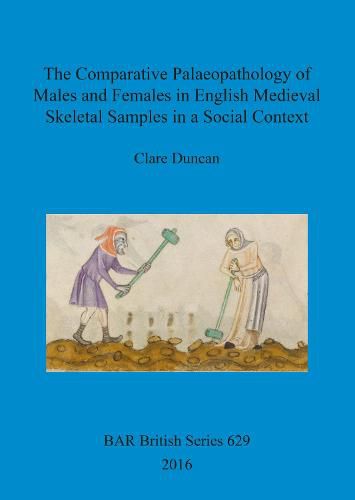Readings Newsletter
Become a Readings Member to make your shopping experience even easier.
Sign in or sign up for free!
You’re not far away from qualifying for FREE standard shipping within Australia
You’ve qualified for FREE standard shipping within Australia
The cart is loading…






This title is printed to order. This book may have been self-published. If so, we cannot guarantee the quality of the content. In the main most books will have gone through the editing process however some may not. We therefore suggest that you be aware of this before ordering this book. If in doubt check either the author or publisher’s details as we are unable to accept any returns unless they are faulty. Please contact us if you have any questions.
The aim of this study was to determine whether there is evidence to suggest that males and females in medieval England experienced differences in health and mortality which could be objectively demonstrated from their skeletal remains. Palaeopathological data pertaining to a total sample of 1,056 adult males and 674 adult females (c.1066-1540 AD) were compared statistically. A method for sexing subadults using tooth measurements was also developed, enabling the comparative analysis to be extended experimentally to a further 83 (47 ‘male’, 36 ‘female’) individuals aged c.5-18 years. The collective analysis of four stress indicators (stature, enamel hypoplasia, cribra orbitalia, non-specific infection) suggested males experienced poorer general health. Males displayed a higher prevalence of fractures, violent injuries, osteoarthritis and Schmorl’s nodes. Females exhibited a proclivity toward knee osteoarthritis and inferior dental health. A statistically significant sex difference in age at death was not demonstrated. Interpretations for the observed patterns are discussed and limitations of the method are evaluated.
$9.00 standard shipping within Australia
FREE standard shipping within Australia for orders over $100.00
Express & International shipping calculated at checkout
This title is printed to order. This book may have been self-published. If so, we cannot guarantee the quality of the content. In the main most books will have gone through the editing process however some may not. We therefore suggest that you be aware of this before ordering this book. If in doubt check either the author or publisher’s details as we are unable to accept any returns unless they are faulty. Please contact us if you have any questions.
The aim of this study was to determine whether there is evidence to suggest that males and females in medieval England experienced differences in health and mortality which could be objectively demonstrated from their skeletal remains. Palaeopathological data pertaining to a total sample of 1,056 adult males and 674 adult females (c.1066-1540 AD) were compared statistically. A method for sexing subadults using tooth measurements was also developed, enabling the comparative analysis to be extended experimentally to a further 83 (47 ‘male’, 36 ‘female’) individuals aged c.5-18 years. The collective analysis of four stress indicators (stature, enamel hypoplasia, cribra orbitalia, non-specific infection) suggested males experienced poorer general health. Males displayed a higher prevalence of fractures, violent injuries, osteoarthritis and Schmorl’s nodes. Females exhibited a proclivity toward knee osteoarthritis and inferior dental health. A statistically significant sex difference in age at death was not demonstrated. Interpretations for the observed patterns are discussed and limitations of the method are evaluated.